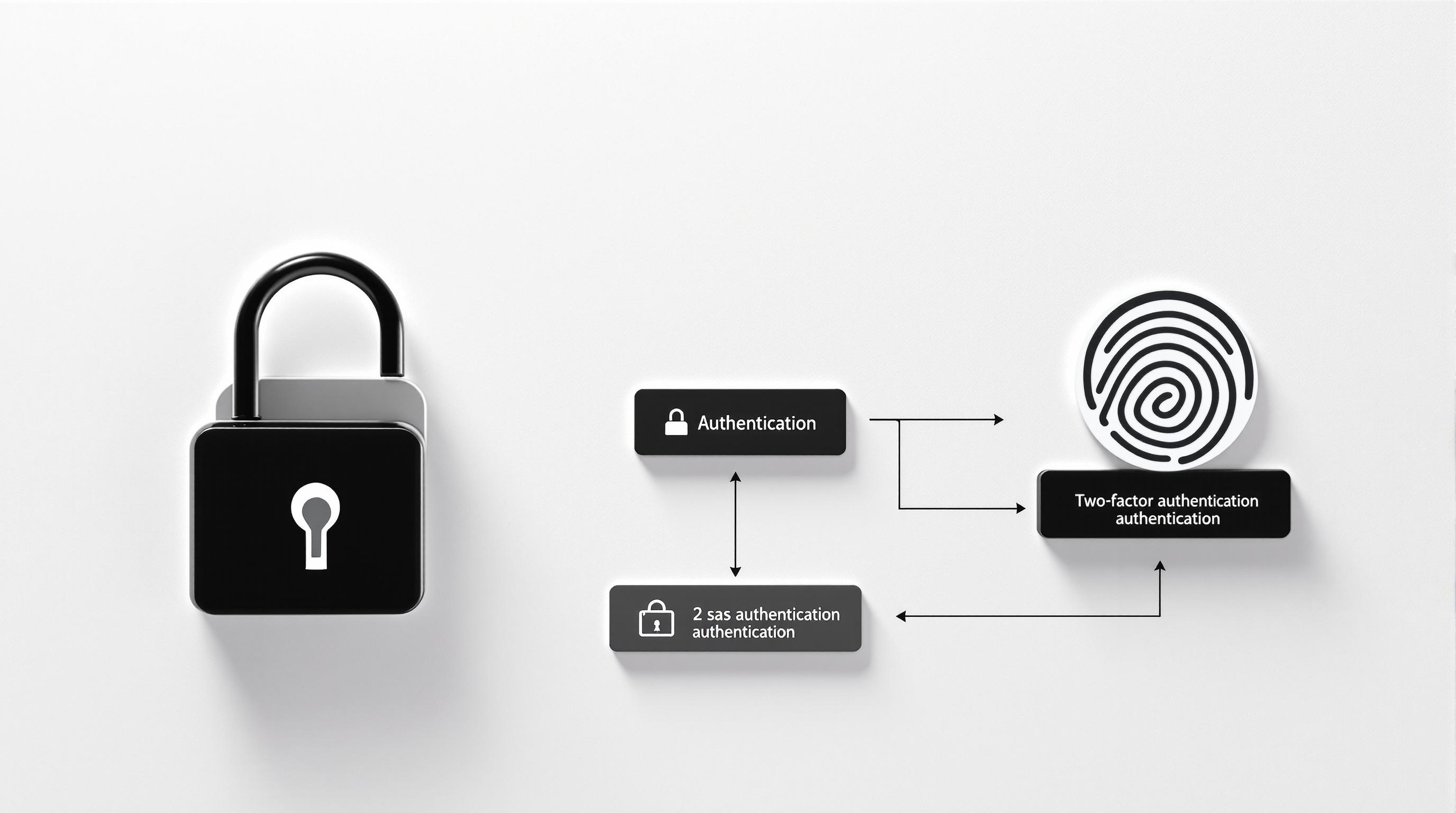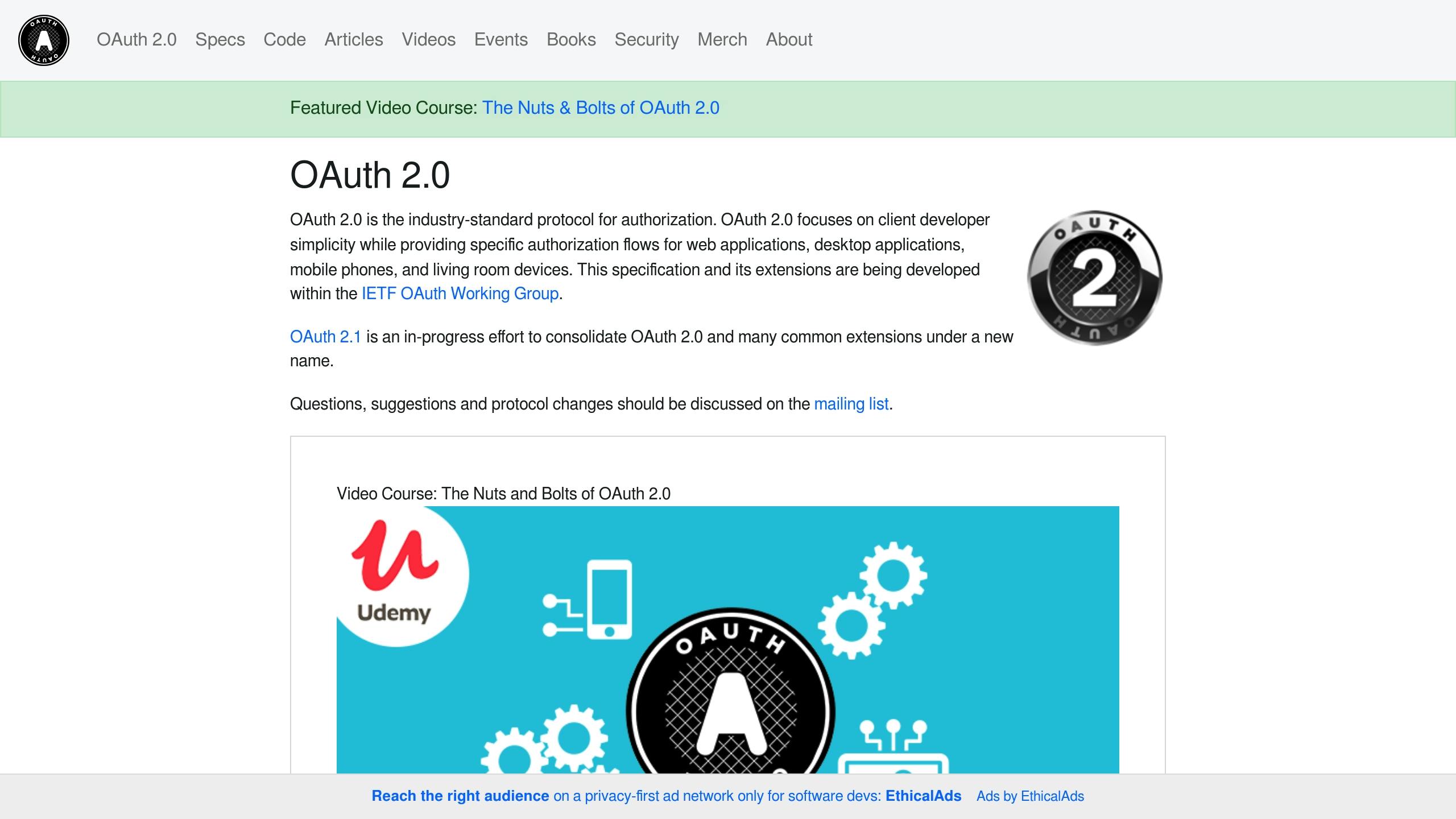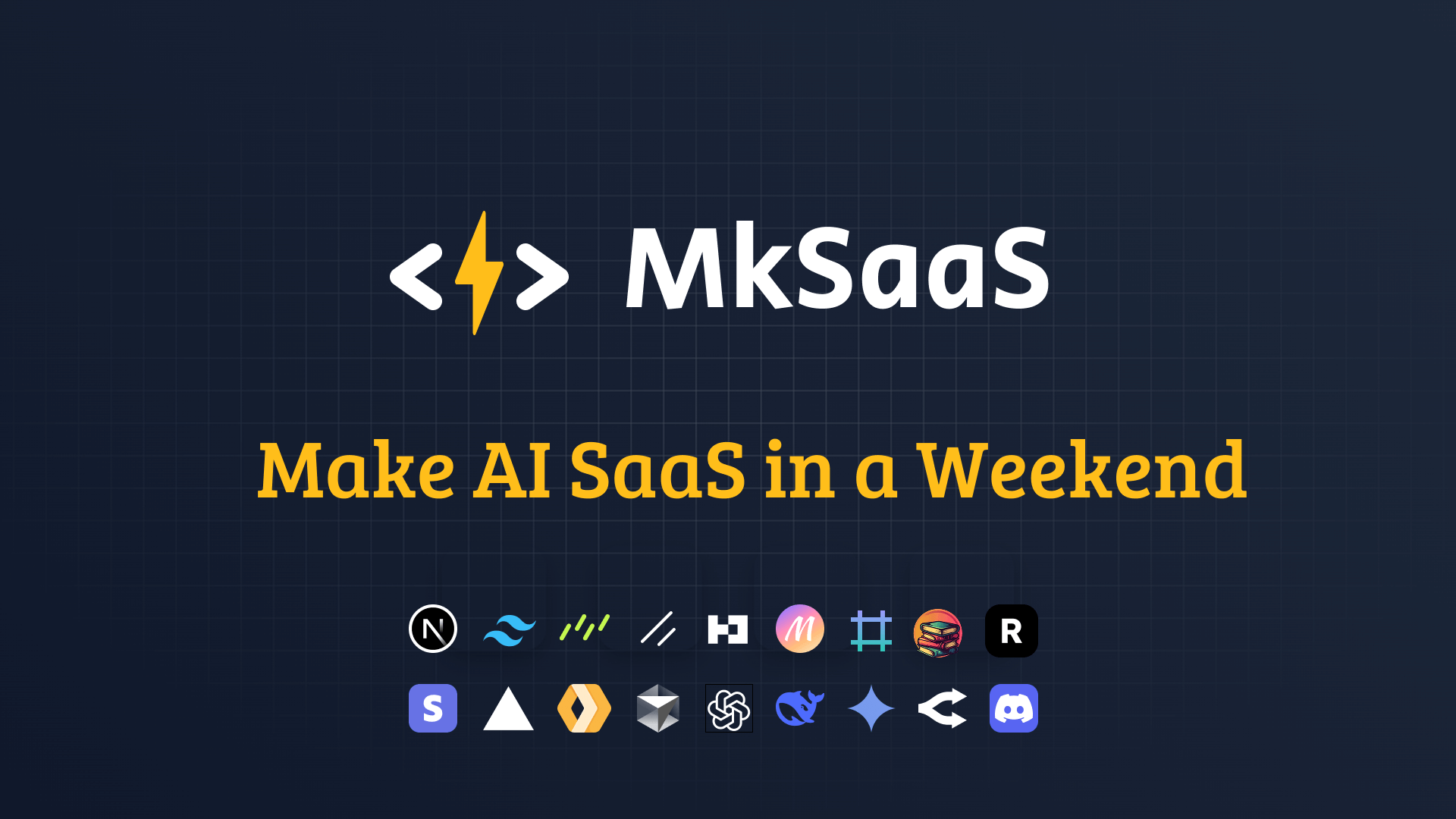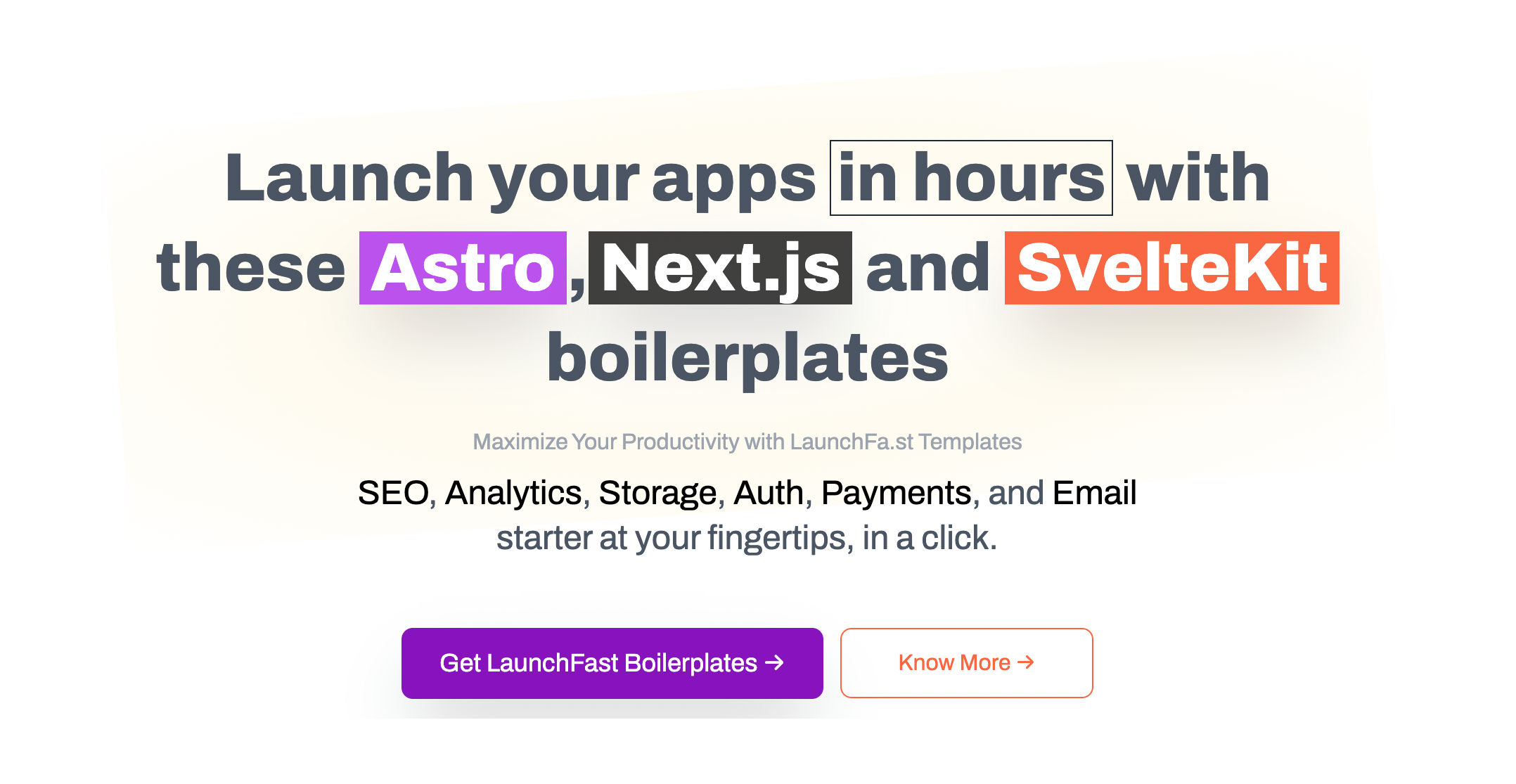Ultimate Guide to SaaS Authentication Methods
We discuss essential SaaS authentication methods, from MFA to passwordless systems, and understand how to secure user data effectively.

Looking to secure your SaaS platform? Modern SaaS authentication methods protect user data and improve access. They have evolved from basic passwords to advanced passwordless systems. This change meets the growing demands for security.
Key Takeaways:
- Common Methods: Multi-Factor Authentication (MFA), Passwordless Login, Social Login
- Top Protocols: OAuth 2.0 (API security), OpenID Connect (web/mobile apps), SAML (enterprise SSO)
- Emerging Trends: Passwordless authentication, zero-trust architecture, and adaptive security
- Factors to Choose: Security needs, user base, scalability, and integration with existing systems
Quick Comparison Table:
| Protocol | Purpose | Best Use Case | Complexity |
|---|---|---|---|
| OAuth 2.0 | Authorization | API Access | Moderate |
| OpenID Connect | Authentication | Web/Mobile Apps | Low |
| SAML | Federation | Enterprise SSO | High |
Why It Matters: With 54% of attacks caused by compromised credentials, adopting strong authentication methods like MFA or passwordless systems is essential to protect users and data. Keep reading to explore how to implement these methods effectively.
Main Authentication Protocols
OAuth 2.0 Basics

OAuth 2.0 is a framework that lets apps access user data with limited permissions, without requiring users to share their passwords. This approach is particularly useful for third-party apps that only need specific access to user resources.
Expanding on OAuth 2.0, OpenID Connect introduces an additional layer that focuses on authentication for modern applications.
OpenID Connect Explained
OpenID Connect (OIDC) builds on OAuth 2.0 by adding an authentication layer. It uses JSON Web Tokens (JWTs), which are lightweight and easy to handle, making them a great fit for today’s apps.
| Feature | Implementation | Advantage |
|---|---|---|
| Token Format | JWT-based | Minimal processing needed |
| Mobile Support | Native integration | Works seamlessly on mobile |
| API Compatibility | REST-friendly | Easy to integrate |
SAML for Enterprise SSO
Security Assertion Markup Language (SAML) is a go-to choice for enterprise-level Single Sign-On (SSO). Its XML-based structure works well for businesses with complex security requirements and older systems. SAML allows users to log in once and access multiple services without needing to re-enter credentials, making it a staple for corporate IT environments.
Protocol Comparison Guide
| Aspect | OAuth 2.0 | OpenID Connect | SAML |
|---|---|---|---|
| Primary Purpose | Authorization | Authentication | Federation |
| Token Type | Access Tokens | ID Tokens | XML Assertions |
| Best Use Case | API Access | Web/Mobile Apps | Enterprise SSO |
| Implementation Complexity | Moderate | Low | High |
Each protocol has its strengths:
- Enterprise Integration: SAML is the top choice for integrating with established corporate identity systems.
- Mobile Applications: OpenID Connect’s JWT format and mobile-friendly features make it perfect for mobile apps.
- API Security: OAuth 2.0, or its extension User Managed Access, excels at securing APIs and managing API gateways.
For secure implementation, always validate redirect URIs against an approved whitelist and enforce strict access controls. When working with single-page or mobile apps, use the authorization code flow with PKCE to enhance security [5].
An Illustrated Guide to OAuth and OpenID Connect
Current Authentication Methods
Today’s authentication methods enhance security by using multi-factor authentication (MFA), passwordless systems, and social login. These strategies aim to address vulnerabilities while improving user experience.
Multi-Factor Authentication Setup
Multi-Factor Authentication (MFA) is a key security feature for SaaS platforms. Compromised credentials are responsible for 20% of breaches, costing an average of $4.37 million per incident. MFA adds an extra layer of protection.
| Authentication Factor | Description | Best Use Case |
|---|---|---|
| Something you know | Password, PIN, security questions | Basic first-factor authentication |
| Something you have | Hardware key, mobile device, smart card | High-security enterprise environments |
| Something you are | Fingerprint, facial recognition, voice | Consumer apps prioritizing convenience |
| Contextual factors | Location, device, time of access | Adaptive security requirements |
To further enhance security, role-based MFA with contextual authentication can dynamically adjust based on perceived risk.
Passwordless Login Options
Passwordless authentication reduces dependency on traditional credentials, addressing both security and usability concerns. In fact, 92% of businesses plan to implement passwordless methods. This shift also saves organizations significant costs, with some spending up to $85,000 annually on password reset tickets.
”Passwordless authentication is trending up and is soon becoming the industry standard. The idea of not requiring users to remember new passwords for multiple accounts enhances the level of trust in the authentication flow, eventually boosting engagement and satisfaction metrics.” - Aviad Mizrachi, Frontegg
Common passwordless methods:
- Magic Links: These email-based links allow users to log in effortlessly, making them ideal for B2C applications.
- Biometric Authentication: Using FIDO2/passkeys, this method leverages device capabilities like fingerprint or facial recognition. It’s especially effective in combating phishing in enterprise environments.
- One-Time Passwords (OTP): Delivered via SMS or authenticator apps, OTPs offer a balance between security and ease of implementation.
Social Login Methods
Social login simplifies the sign-in process, offering users a fast and familiar option. Currently, social login accounts for one-third of all sign-ins. Among providers, Google dominates with 90.8% of social authentications, followed by Apple at 8.8%.
A case study from a Descope B2C enterprise client highlights the impact of social login:
- Social login usage climbed from 10% to 29% in just two months.
- Overall social logins increased by 190%.
”Authenticating our community members with LinkedIn is intuitive for them, gives us a better understanding of their identity, and removes the burden of managing passwords.” - Seetharam Venkatesh, Co-Founder of funda.club
To optimize this method, limit social login options to avoid overwhelming users. Focus on providers that align with your audience’s preferences.
Authentication System Design
Creating an effective authentication system builds on existing methods to ensure both secure and scalable access control.
Central vs. Distributed Auth
When designing authentication systems for SaaS platforms, the choice between centralized and distributed architectures plays a crucial role in determining security and scalability. Centralized systems make it easier to monitor and manage user permissions across applications. On the other hand, distributed systems offer improved fault tolerance and performance.
| Architecture Type | Benefits | Best Use Case |
|---|---|---|
| Centralized Auth | Single point of control, Simplified auditing, Consistent policy enforcement | Enterprise SaaS with multiple integrated services |
| Distributed Auth | Better availability, Regional compliance, Reduced latency | Global SaaS applications with geographic requirements |
Research from Ping Identity shows that organizations using centralized authentication management see a 47% reduction in access control-related security incidents. To improve SaaS performance, it’s essential to position the authorization server close to your APIs and deploy it across multiple regions, each with its own cluster.
Once the architecture is selected, the next step is implementing secure token management.
Token Authentication Steps
Token-based authentication is a cornerstone of modern SaaS applications, especially since 86% of data breaches involve stolen credentials. As Matt Pollicove, Solutions Architect at Ping Identity, explains, “Tokens replace passwords for authentication, providing secure identity verification”.
Key steps for implementing token authentication in SaaS environments:
- Initial Setup: Use HTTPS for all token transmissions and ensure tokens are securely stored.
- Token Management: Set expiration times for tokens and establish a robust validation system with clear revocation strategies.
- Security Measures: Apply the RS256 signing algorithm for stronger security and use allow-lists to avoid algorithm-related issues. Always validate JWTs at the receiving service and check both issuer and audience claims.
Proper token management is essential for maintaining secure user sessions.
Session Security Guidelines
Session security is critical in SaaS applications due to threats like session hijacking. Imperva defines session hijacking as “the malicious act of taking control of a user’s web session”.
| Security Measure | Implementation Guide | Impact |
|---|---|---|
| Token Policies | Automatic expiration, secure storage | Reduces attack windows |
| Access Controls | Regular review, least privilege principle | Limits unauthorized access risks |
| Monitoring | UEBA, anomaly detection | Flags suspicious activities |
To strengthen session security, consider these practices:
- Use HTTPS for all communications to prevent token interception.
- Set automatic session termination after inactivity.
- Deploy User and Entity Behavior Analytics (UEBA) to detect unusual login patterns.
- Conduct routine security audits and maintain continuous monitoring systems.
For added protection, integrate session management with multi-factor authentication. Regularly review access controls and update security policies to address emerging threats and changes in user behavior.
Choosing Auth Methods
Key Selection Criteria
Picking the right authentication method for your SaaS application involves evaluating several important factors. Franco Ieraci explains:
“Implementing robust authentication and authorization systems is fundamental for safeguarding our SaaS applications. It’s about more than just confirming identities; it’s about meticulously controlling access to ensure each user interacts only with the data and features aligned with their role.”
Here’s a breakdown of the main factors to consider:
| Selection Factor | Consideration Points | Impact on Choice |
|---|---|---|
| Security Requirements | Compliance needs (e.g., GDPR, HIPAA), Industry standards (e.g., ISO 27001, NIST) | Determines the sophistication of the protocol |
| Implementation Complexity | Development resources, Timeline constraints | Affects whether to opt for simpler (API keys) or more advanced (OAuth 2.0) solutions |
| User Base | B2B vs. B2C, Geographic distribution | Shapes the design of the authentication flow |
| Scalability Needs | Current user volume, Growth projections | Impacts infrastructure and future readiness |
| Integration Requirements | Compatibility with existing tech stack | May narrow down the available options |
Research underscores the importance of ensuring SaaS providers meet established security standards and maintain reliable data backup systems. These factors help align authentication methods with the specific needs of various SaaS applications.
Auth Methods by SaaS Type
Different SaaS applications call for tailored authentication strategies based on their audience and use case. The method chosen should strike a balance between security demands and operational complexity.
| SaaS Type | Recommended Auth Methods | Key Considerations |
|---|---|---|
| Enterprise SaaS | SSO with SAML, MFA | Handles complex organizational structures and compliance needs |
| B2B Multi-tenant | SSO with role-based access control | Ensures customized access management for organizations |
| B2C Applications | Social login, Magic links | Focuses on user convenience and easy onboarding |
| Developer Tools | API Keys, JWT | Prioritizes developer experience and seamless integration |
| Financial Services | mTLS, OAuth 2.0 | Meets high-security demands and regulatory requirements |
These recommendations align with the protocols discussed earlier, ensuring that the authentication method fits the SaaS type.
Upcoming Auth Trends
Emerging trends are reshaping how SaaS authentication works:
- Passwordless Authentication
This method is gaining popularity for offering both stronger security and better usability. - Enhanced Security Protocols
Modern systems now focus on token-based security and more precise access controls. - Advancements in OAuth 2.0 and OpenID Connect
These protocols continue to evolve, providing users with greater control over data access while meeting GDPR requirements. Their features are especially useful for enterprise applications that need delegated access.
To ensure strong security, organizations should:
- Regularly assess risks before implementing SSO
- Enforce strict password policies wherever passwords are still in use
- Continuously monitor authentication activities
The future of SaaS authentication lies in solutions that deliver both high security and a smooth user experience, while keeping pace with changing regulatory landscapes.
Conclusion
Main Points Review
When it comes to effective authentication, there are three core elements to consider: security, usability, and scalability. Stewart Marshall, CEO & Founder of SOFTWARE Australia, puts it best:
“Remember that effective security is a competitive advantage. Though it appears costly, robust security is a strategic advantage. There are far too many horror stories about those who didn’t take it seriously and paid the price. It’s one area you should invest in strongly.”.
Here’s a breakdown of the three pillars that form the foundation of strong authentication systems:
| Pillar | Key Considerations | Implementation Focus |
|---|---|---|
| Security Foundation | Risk assessment, compliance needs | Multi-factor authentication, encryption protocols |
| User Experience | Minimizing friction, ensuring adoption | Single sign-on, social logins for suitable scenarios |
| Scalability | Growth projections, multi-tenant support | Role-based access control, distributed authentication |
Take Spotify as an example. By using Mailchimp’s Email Verification API, Spotify reduced its bounce rate from 12.3% to 2.1% in just 60 days, processing a massive 45-million subscriber database. This change led to a 34% boost in deliverability and an additional $2.3M in revenue.
This case shows how a clear, well-executed strategy can deliver measurable results. With data revealing that up to 65% of SaaS application usage can be unsanctioned, businesses need to prioritize:
- Continuous verification: Adopting Zero Trust principles for stronger security
- Balanced implementation: Combining multiple methods tailored to specific needs
- A user-first approach: Ensuring security measures are effective without being burdensome
To truly succeed, organizations must regularly monitor and update their systems, using context-aware solutions that scale with their growth. This ensures their security framework stays both effective and future-ready.
Recommended SaaS Boilerplates
Below you’ll find three highly recommended SaaS boilerplates that have built-in authentication methods:






